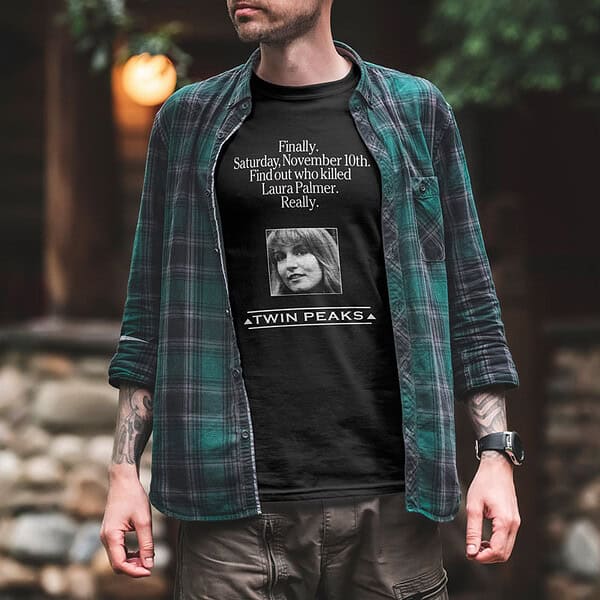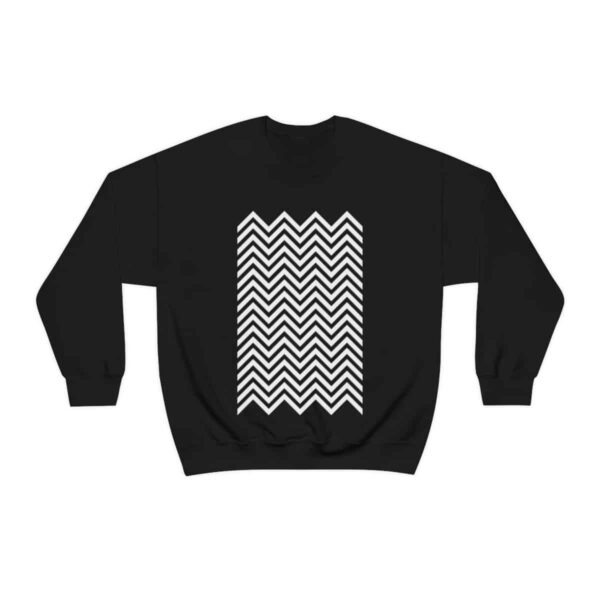Around the dinner table, the conversation was lively. Thank you but for now, the forum has been archived.
I've read through the majority of posts here (enjoyable) and have the same keen interest in this outstanding work of art. I find myself wondering how much of this truly is mastermind, and how much is built upon the first two seasons, because ultimately there was no sense (just experimentation). You could imagine this as flying blindly. Is this one giant (It's happening again), stroke of genius, or is it a incredibly well-melded project? People here analyse EVERYTHING (I do too; that's not a dig), but how much is 'meaningless' and just for show. Can you people suggest this as a rough percentage?
I suggest that the show is likely 70% well considered/meaningful, and 30% the opposite. It's all fun though. Viva La Lynch!
Too soon to tell! We'll have to see how it comes together. I think Lynch himself describes the process as being a large percentage of planning and a small percentage of happy accidents. Kind of like how he described accidentally filming Frank Silva in the mirror of the pilot episode, right?
When you study fine art you learn that the magic in creating a piece is to leave enough of a mystery that it nags at the viewer to keep thinking about it. Sometimes the artist has an interpretation in mind, but sometimes not. I suspect he does, but he's happy to see how the fans interpret the information.
They're very good at not "spoon feeding" the audience too much information. Keeps the forum active 🙂
Good question. I believe the majority - 90% or more is entirely planned, and has some kind of contextual meaning within the narrative. Maybe not all of that 90% is directly related to the narrative, but that it gives added depth and scope to the Twin Peaks universe/continuum.
The rest, maybe stuff that seemed like a neat idea, the happy accidents as mentioned by Christen above, and other stuff that was suggested along the way, in order to make a scene or plot point sharper, or in some cases, more ambiguous.
For all I know, it could be 99% planned; I certainly wouldn't think there's any "just for show" stuff in there at all. I haven't seen any evidence of padding. Even the seeming throwaway stuff eventually comes back to make a point, or tie some loose ends together. This being Twin Peaks, though, for every resolution, there are at least two more mysteries.
Just going back to the "Just for show" bit... Lynch, although a meticulous planner, seems to have a more organic approach to direction than, say, Hitchcock. He engages with cast and crew, works with them to improve things as they go along. Hitchcock used to say all that everyone needed to to was learn to say the word, not bump into things, and for the cameras to be pointing the right way. In other words, deadpan. Lynch seems to go out of his way to be the opposite of that, he can get right down into the emotional subtext, but in a very sneaky (for want of a better way) manner, so that the subtext doesn't hit you in the eye, it creeps up behind you and lurks there until everything has gone quiet, then whispers "Boo!" in your ear. But, just for show? Nope; a place for everything and everything in its place.
Good question. I believe the majority - 90% or more is entirely planned, and has some kind of contextual meaning within the narrative. Maybe not all of that 90% is directly related to the narrative, but that it gives added depth and scope to the Twin Peaks universe/continuum.
The rest, maybe stuff that seemed like a neat idea, the happy accidents as mentioned by Christen above, and other stuff that was suggested along the way, in order to make a scene or plot point sharper, or in some cases, more ambiguous.
For all I know, it could be 99% planned; I certainly wouldn't think there's any "just for show" stuff in there at all. I haven't seen any evidence of padding. Even the seeming throwaway stuff eventually comes back to make a point, or tie some loose ends together. This being Twin Peaks, though, for every resolution, there are at least two more mysteries.
Just going back to the "Just for show" bit... Lynch, although a meticulous planner, seems to have a more organic approach to direction than, say, Hitchcock. He engages with cast and crew, works with them to improve things as they go along. Hitchcock used to say all that everyone needed to to was learn to say the word, not bump into things, and for the cameras to be pointing the right way. In other words, deadpan. Lynch seems to go out of his way to be the opposite of that, he can get right down into the emotional subtext, but in a very sneaky (for want of a better way) manner, so that the subtext doesn't hit you in the eye, it creeps up behind you and lurks there until everything has gone quiet, then whispers "Boo!" in your ear. But, just for show? Nope; a place for everything and everything in its place.
Good, interesting and well thought-out answer. You could be forgiven for thinking that certain scenes are 'filler' (or padding as you say), such as Shelly's daughter/drug fella, but then they turn up and more happens (with perhaps the exception (of the exceptional performance) of Michael Cera). It's clearly an intricate web and delighting in/delving into the spinning and silk is why we're here now. There's been many characters that I thought we wouldn't see again (and that was OK), but just passing the halfway mark, I realise that I'm likely wrong (way!).
I'm not convinced that season 3 isn't building on an unplanned-unexpected continuation of season 2, but whatever the weather; this is winning.
When you study fine art you learn that the magic in creating a piece is to leave enough of a mystery that it nags at the viewer to keep thinking about it.
OK so it's the silence between the notes that make the music. Or at least, in a formless fashion help form the melody.
So, this 'mystery'. Do you envisage that it's a mystery in Lynch/Frost's mind, or are they simply holding back?
BTW you have the best avatar EVER.
I think it was pretty much fully planned before season two went to hell in a hand basket.
Then I think it had to be replanned based on what was left to work with.
I'm really hoping for a book or something, explaining what was meant to be from the beginning and what they had to change. After the series is over, of course.
A nice, comprehensive book all about making Twin Peaks would be ace! A big, fat book.
Like a Jackson Pollock painting, it was 100% considered in its creation. Because you don't understand the art does not mean it wasn't.
PLANNED is a different word. There were unplanned moments in original TP which through DL gave us Bob, the Arm, Mike for example.
Dunno how the guys actually wrote it but I had a conversation with Iain (M) Banks once, where he told me how he wrote his books. It's a great idea, and will be familiar to anyone who has ever done programming.
Start with the basic idea, then next level down, break that into logical sections. Break each section down into the necessary parts to make them happen in a logical manner.
Another level down, create the subsidiary events to keep things moving along.
By the time you get to this level, the story is just about written and then you can play with the structure.
Banks' views on characters were interesting, too; he said the characters are there only to drive the ideas along. That's not to say the character has no personality or individuality, but that every trait must form part of the narrative. Cooper, for example, loves coffee and cherry pie, and the way he reacts to these simple pleasures highlight the fact that he's a traditionalist, an upright, straight arrow, no-nonsense type, almost a Boy Scout, in some respects. We don't know if he enjoys Acid Jazz or Crunk because it's not necessary to know.
Lynch from this article... http://ew.com/tv/2017/05/26/twin-peaks-david-lynch/
Do you think in terms of allegory or meta?
Not really. Ideas just come, you think about them, and you figure out their meaning. Then, how they fit into the whole is another thing completely. It’s not finished until it’s finished, and you don’t really know until further down the road how one thing relates to another. It’s just like a magical thing. I also always say the whole thing exists in another room as a complete puzzle, all the parts are together, and someone from that other room is sort of a rascal and randomly flips parts over into this room. And then you to have to put the puzzle together, but one is from the end of the story, one is from the middle, and a couple from the beginning, and you won’t know until it’s more formed what it could be.
When you study fine art you learn that the magic in creating a piece is to leave enough of a mystery that it nags at the viewer to keep thinking about it.
OK so it's the silence between the notes that make the music. Or at least, in a formless fashion help form the melody.
So, this 'mystery'. Do you envisage that it's a mystery in Lynch/Frost's mind, or are they simply holding back?
BTW you have the best avatar EVER.
Like the music of Arvo Pärt! It's about creating anticipation for the next note!
I really think, based on what I've seen, heard, and read about his work that they very likely have their carefully planned concept and they are executing that story within the framework of the story with those rules. I also think that they are going to leave certain parts of it open to interpretation for, well, forever. That's almost their brand. I am hoping that some things get wrapped up so we can sleep at night, for crying out loud. But are they ever going to explain that scene with the pink room and Naido? Probably not. So we can argue about it, FOREVER.
And that's why Twin Peaks never dies, even after you cancel it.
And thank you for the compliment! No joke, elf ears were the best accessory I ever bought. 😀
And thank you for the compliment! No joke, elf ears were the best accessory I ever bought. 😀
How many times have your worn them? Are you a seasoned cos'player?
I've read through the majority of posts here (enjoyable) and have the same keen interest in this outstanding work of art. I find myself wondering how much of this truly is mastermind, and how much is built upon the first two seasons, because ultimately there was no sense (just experimentation). You could imagine this as flying blindly. Is this one giant (It's happening again), stroke of genius, or is it a incredibly well-melded project? People here analyse EVERYTHING (I do too; that's not a dig), but how much is 'meaningless' and just for show. Can you people suggest this as a rough percentage?
I suggest that the show is likely 70% well considered/meaningful, and 30% the opposite. It's all fun though. Viva La Lynch!
Ah! I've been wondering this too. Much of the design and logic of the red room (and many other things in Twin Peaks) are the result of intuition – simply the belief that if an idea presents itself strongly enough, that there is something to it which you might not realise yet, but the value may be emerging from somewhere much deeper than the conscious mind can reach. Lynch often describes his creative process as though he's placing his trust in the unknown.
I feel in The Return that there is a lot of going back and looking at these intuitive decisions and now wanting to make sense of them or see what sense they make when you put them all together.
I would say a good 60% is sorting through old material and working out what he thinks it all actually means. 30% is new stuff he thought would make it worthwhile as something new in itself and 10% is him working in his old intuitive way.
I've read through the majority of posts here (enjoyable) and have the same keen interest in this outstanding work of art. I find myself wondering how much of this truly is mastermind, and how much is built upon the first two seasons, because ultimately there was no sense (just experimentation). You could imagine this as flying blindly. Is this one giant (It's happening again), stroke of genius, or is it a incredibly well-melded project? People here analyse EVERYTHING (I do too; that's not a dig), but how much is 'meaningless' and just for show. Can you people suggest this as a rough percentage?
I suggest that the show is likely 70% well considered/meaningful, and 30% the opposite. It's all fun though. Viva La Lynch!
Ah! I've been wondering this too. Much of the design and logic of the red room (and many other things in Twin Peaks) are the result of intuition – simply the belief that if an idea presents itself strongly enough, that there is something to it which you might not realise yet, but the value may be emerging from somewhere much deeper than the conscious mind can reach. Lynch often describes his creative process as though he's placing his trust in the unknown.
I feel in The Return that there is a lot of going back and looking at these intuitive decisions and now wanting to make sense of them or see what sense they make when you put them all together.
I would say a good 60% is sorting through old material and working out what he thinks it all actually means. 30% is new stuff he thought would make it worthwhile as something new in itself and 10% is him working in his old intuitive way.
Interesting answer. Can we take from this the fact that as he creates/directs, Lynch benefits from personal discovery? If so; what a job...














